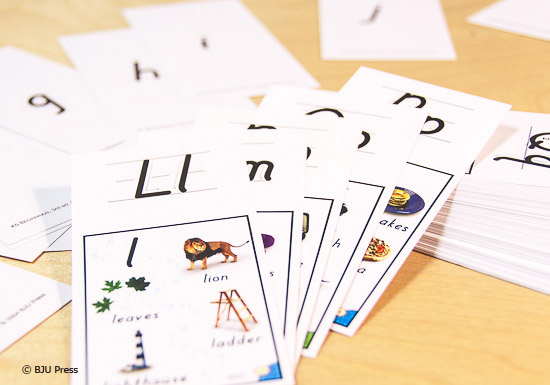
In July, I wrote a post about how to know when your child is ready to start kindergarten. But what if you’ve already started, and your child is having trouble? Let me tell you about my friend (whom I’ll refer to as Amanda) when her youngest son (Joel) was struggling with learning to read. Here’s how they found success.
Amanda had no worries about Joel starting kindergarten. He was four and a half, four months older than his older brother (William) had been when he had started. William had learned to read in K5 and had breezed through his early elementary years in a Christian school, exceeding both his parents’ and his teachers’ expectations. Although circumstances had changed and Amanda was now homeschooling, she didn’t expect Joel’s experience to be much different.
“I assumed that we would never have a problem,” Amanda told me. After all, Amanda was a former third-grade teacher. She was confident in her teaching ability. She was also confident in her curriculum choice—BJU Press—which “laid everything out for me. I knew exactly what to do.”
Joel completed K4 and K5. He would often answer his brother’s third-grade math problems. But at the end of K5, Joel still wasn’t reading.
“I didn’t think that much about it,” Amanda admits. “BJU Press does not expect mastery of every concept at the kindergarten level, so I just thought that he would pick it up in first grade. I figured that he just needed more time.”
But they got into first grade, and Amanda found herself spending all morning with just the reading aspect of the curriculum. And Joel wasn’t getting it.
“I remember sitting at the dinner table one night. My husband asked Joel what he had learned in school that day. Joel didn’t remember. I said, ‘The letter T.’ My husband asked Joel what sound T made. Joel made several attempts at an answer, but none of them were right. We had spent all morning on this concept. And he still wasn’t getting it. I realized at that point that we were in trouble.”
“It was the most frustrating experience for both of us,” Amanda relates. “I was frustrated. Joel was frustrated. And I started thinking, ‘What do I do? Should I repeat him? Should I pull him back to kindergarten?’”
She sought the advice of a friend that taught K5 at a Christian school. Her friend advised her to just keep on going. She told Amanda that for a lot of boys, reading “clicks” the second half of first grade. Another friend of Amanda’s with a lot of teaching experience seconded that advice. “You’re homeschooling,” she reminded Amanda. “You can do whatever you want. Make accommodations. Think outside the box and try teaching it another way.”
Amanda went to the craft store and bought decorative letters, punched them out, and let Joel paint them. She went to the hardware store and bought sandpaper and had Joel trace letters on it. “We did a lot of hands-on,” Amanda tells me. “Nothing by itself seemed to be making a difference, but we kept doing it.”
They kept plugging away, and then in the spring, something happened. Joel started reading.
“It finally just all came together for him,” Amanda remembers with a smile. “He wasn’t a great reader by the end of first grade, but he was reading. And he’s done fine ever since.”
Joel is indeed doing well. He’s entering his senior year in high school and is looking toward the future. He wants to attend college next year to study criminal justice and history. Amanda is obviously proud of the young man he has become. “Those days that we struggled were horrible—I wouldn’t want to repeat them. But I’m glad we didn’t pull Joel back into kindergarten or have him repeat first grade,” she tells me. “Intensely focusing on phonics instruction was the right thing to do even though it took a lot of time and energy. Joel ended up succeeding. And since we were homeschooling, his success was my success too.”
Leave a Reply